Beautifully restored 1980s Massey Ferguson 698
Posted by Chris Graham on 15th July 2024
Chris Graham heads north of the border to meet Duncan McColl and his pristine and beautifully restored, 1983 Massey Ferguson 698.
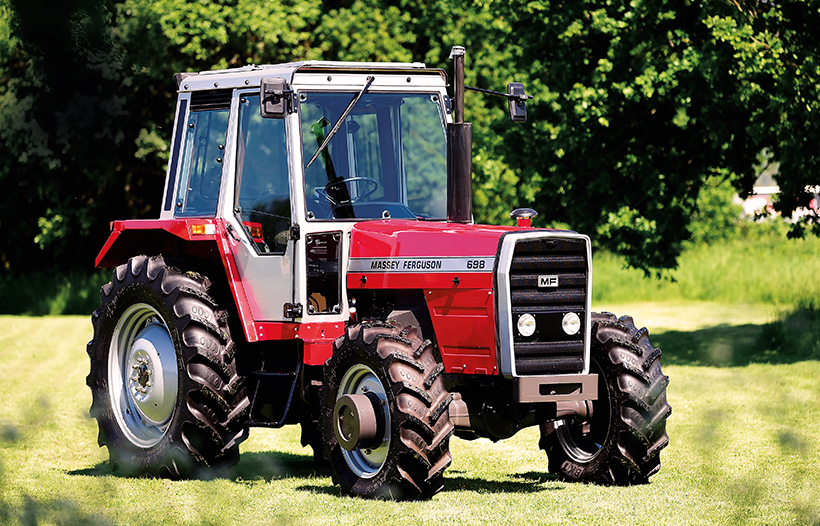
Massey Ferguson 698: Duncan decided to finish the tractor in modern, two-pack paint. He prefers the way it looks and its superior durability.
Those of you who were at the Tractor World Show in Malvern earlier this year, and spent some time admiring the spectacular display organised by the Friends of Ferguson Heritage club, may recognise the tractor featured here. Duncan McColl’s MF 698 was one of the stand-out tractors on the stand among a very strong display of wonderful machines from across the ages.
As tractors from the 1980s continue to grow in popularity, it’s clear that an increasing number of enthusiasts are beginning to appreciate the many virtues these ‘modern classics’ have to offer. As a result, more no-nonsense, reliable and still productive models like this 88hp machine are finding their way into the hands of owners willing to devote the care and attention needed to ensure their survival, which is great news. But, as you’ll see, this tractor and its current owner go back a long way, so the attraction here isn’t simply a practical one, it’s strongly sentimental, too.

The 698 in more or less ‘as bought’ condition, back in 2015. It was still a decent runner but the poor quality, Italian steel used to make the cab meant that corrosion was a real problem.
Holiday help
Duncan lives near Stirling, in Scotland, and comes from a farming background. “My dad’s dad had a small farm at Dunblane, in Perthshire,” he explained, “and my maternal grandfather was a farm worker in the same area. Although my father was an engineer and had no agricultural involvement, I used to spend all my summer holidays helping on the farms as a child and, to be honest, I never wanted to do anything else apart from farming when left school.
“The first tractor I drove was a grey Fergie – when I was about 10 years old – and I think the die was cast from that moment. Happily, that machine stayed in the family, and I’ve just started its restoration. My first restoration project was a David Brown Cropmaster, essentially because I liked the look of the scuttle panel that extends up around the steering wheel. That was back in 1974, and the machine I found cost me just £14. Dad helped me with that rebuild, and I got my first experience of getting inside an engine, so I learned a lot.
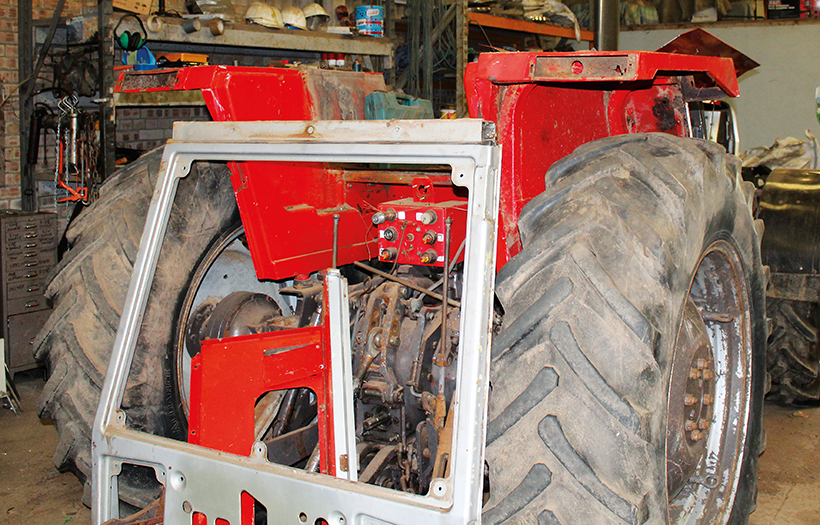
Initially Duncan thought he’d have to crane the cab off, but it actually unbolted like a giant Meccano set.
“When I left school I got job on a farm near Stirling that specialised in the production of Timothy hay, and I worked there for a year. After that I moved and became the tractor man on a mixed farm. I had to do bit of everything there; working with sheep and other livestock, servicing and maintenance work, and crop-spraying. The farm was a Massey Ferguson-only operation, and I think that’s where my affection for the marque really stems from. It was there, back in the early 1980s, that I had my first experience of driving a brand new MF 698.”
Sadly, though, Duncan’s time on that farm was to come to a premature end, as economic realities started to hit home. “I had to leave the farm in search of more money to support my young family. While I loved everything about the job, I had no other option but to make a change, and decided to become an HGV truck driver instead. I took my test aged 22 and, as I had an uncle who earned his living hauling timber, I thought I’d try that. After seeing the bank manager and arranging a loan, I put a truck on the road and got on with it. That turned out to be a good decision and I’ve been happily in the same line of work for the past 38 years!”

Once the tractor had been reduced to a rolling skid unit, the mechanical restoration could begin.
Chance encounter
A long, tractor-free period then followed during which Duncan concentrated on building his business, normal family life and raising his children. Then, in the early 2000s, and completely by chance, a very familiar tractor re-appeared on the horizon. “I’d always kept in touch with Sandy Anderson, my previous employer, and was surprised to discover that he still had the MF 698 I’d known so well on his farm. This was amazing given that Sandy routinely changed his tractors every four years, and I found it incredible that he’d hung onto that one for so long. I made a mental note but then thought no more about it.
“Fast-forward another 10 years or so and, during one of our occasional chats, I asked Sandy about the MF 698 again, and he still had it. So I suggested that if he ever decided to sell, I’d be grateful of first refusal. But I had to wait a further five years before anything happened. I was visiting the farm with Sandy all but retired and, while having a look at his pedigree Aberdeen Angus cows, I noticed the old 698 in the corner of a shed. When he saw me looking at it he asked if I was still interested. I jumped at the chance and we agreed the sale there and then.

The repaired cab back on the tractor. The front and rear screens had to be replaced but all the rest of the original glass could be re-fitted.
“In my head, the tractor was still the same as the four-year-old machine I’d left back in 1987 but the reality, in 2015, was somewhat different. I hadn’t bothered to take a close look on the day I bought it, because I was so eager to get the deal done. So it wasn’t until I went to collect it that the truth finally dawned. The years had taken quite a toll on the 698 and I only had to open the cab door – which nearly fell off as I did so! – to appreciate just how it had deteriorated.”
Still running
But, despite its generally scruffy appearance and the badly corroded cab, Duncan was pleased to find that the tractor still ran and drove well enough. “I’m not sure how much actual work it had done during its final decade on the farm, although I’d guess not very much. It was fitted with a topper when I bought it, but the hydraulics were faulty so I don’t think it had been used for a while,” Duncan explained.

None of the plastic components in the cab worked, so a complete set of trim had to be cobbled together, repaired and then painted. The seat was re-upholstered, too.
“My initial investigations revealed that both the primary and the auxiliary hydraulic pumps were shot, hence the linkage inactivity. I also found that, at the other end of the tractor, the front axle was in a poor state, and I could see oil seeping out past every seal.” However, before getting stuck into any repair or reconditioning work, Duncan set about the tractor with his steam cleaner.
“When it was as clean as I could get it, it became obvious I was into a full nut-and-bolt restoration; it was too far gone to be preserved it its original condition. So I began the strip-down by removing the tinwork, followed by the cab. I thought the latter would need to be craned off, but I was able to unbolt it like a giant Meccano set!
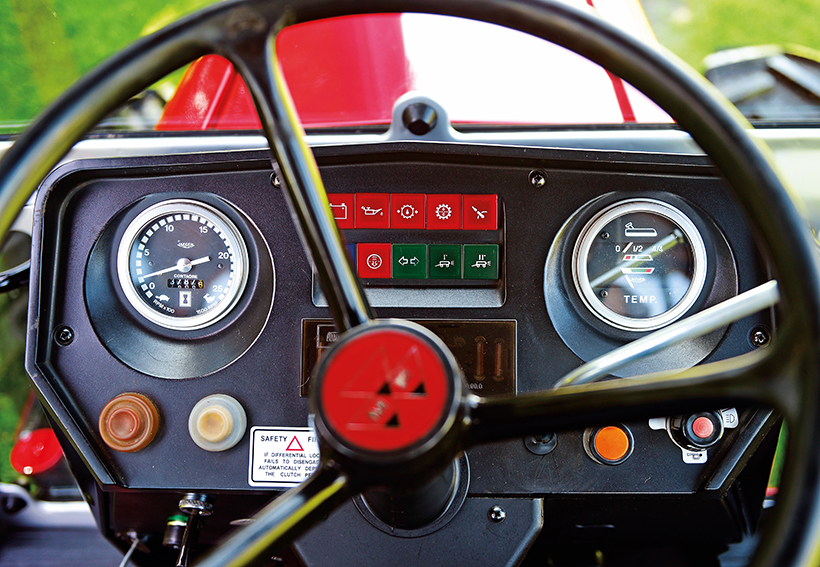
The dashboard and gauges are all original and fully functional.
“Once I got down to the skid unit, I decided to leave the engine in place as it seemed to be running so well but, given that the front axle was so worn, I did take that off so that it could be fitted with new bearings and seals throughout. I also removed the cylinder head and the engine sump for a closer look inside and, while I was about it, replaced the oil pump.”
The 698’s tractormeter shows that it’s run for about 7,500 hours and, as it’s still working, he has no reason to doubt that total – especially as he was responsible for the first 5,000 of those hours! “Judging by the state of the front axle and the hydraulics, I expected to find significant signs of mechanical wear in the engine, but it was in remarkably good condition. There was no wear in the cylinder bores and I couldn’t detect a lip at the top of any of them. I opted to fit new piston rings just to be on the safe side, and the head was sent away to be skimmed and have the valves done. The fuel pump was refurbished, the injectors were reconditioned and so was the radiator.”
The cab beckons
According to Duncan, the rear axle was pretty much OK although, having stripped it, he did renew the inboard brake discs, which was a straightforward job. After finishing that, attention turned to the cab. “I could tackle quite a lot of this refurbishment work myself, although I had to rely on specialist help for some of the more intricate welding jobs,” he explained. “I was perfectly happy to fabricate things like a new guard for the front driveshaft, using the remains of the original as a pattern, but shied away from repairing the more delicate tinwork. I think you really need to know your stuff to tackle that properly. I left the doors and the front panel to Alan Dougan, in Auchterarder, who is an expert at panel preparation and painting. He also did the main spraying for me, too.
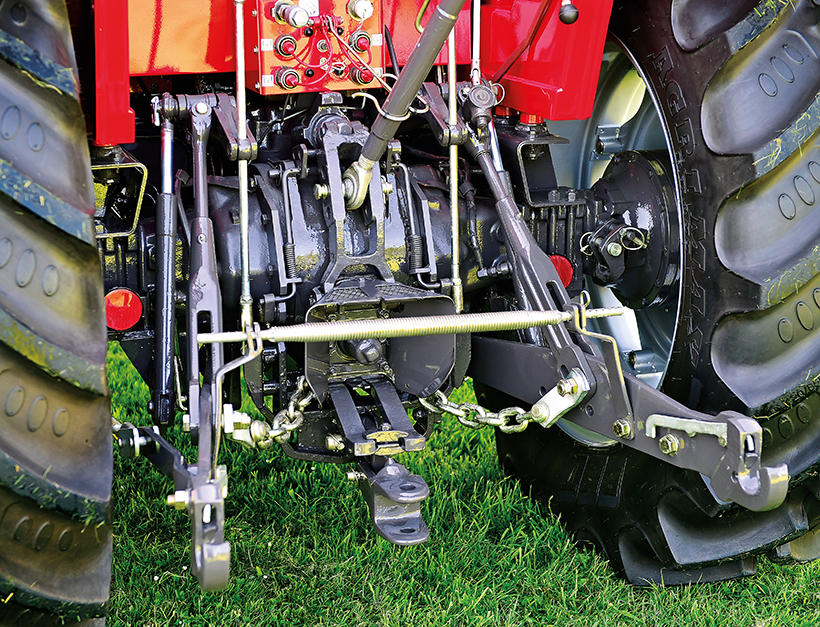
The hydraulics had failed by the time Duncan got the tractor. Two new pumps were required and the whole system was overhauled with lots of help from ex-Massey Ferguson technician, Allan Bain. Initially everything was painted grey but, to bring the tractor up to show standard, many of the parts had to be stripped back and zinc-plated.
“Unfortunately, all the plastic fittings inside the cab were in a terrible state; virtually everything was either broken, cracked or missing and when I checked the spares situation, none were available. I contacted specialist Massey Ferguson breaker, Richard Hoyland, based in Wakefield. He had six 600 Series cabs that I scavenged bits from and, with the plastic-welding skills of one of Alan’s colleagues, we put a full set together.
“The tractor’s still has its original dashboard and gauges, all of which are working. The original steering wheel’s there, too. Although I could have switched it for a shiny new one, I was keen to hang on to the old one as it’s the one I used for so many hours back in my 20s. Elsewhere in the cab the seat had to be replaced (again from Richard Hoyland), and I had it professionally recovered in period style, while the original headlining just needed a good clean.”
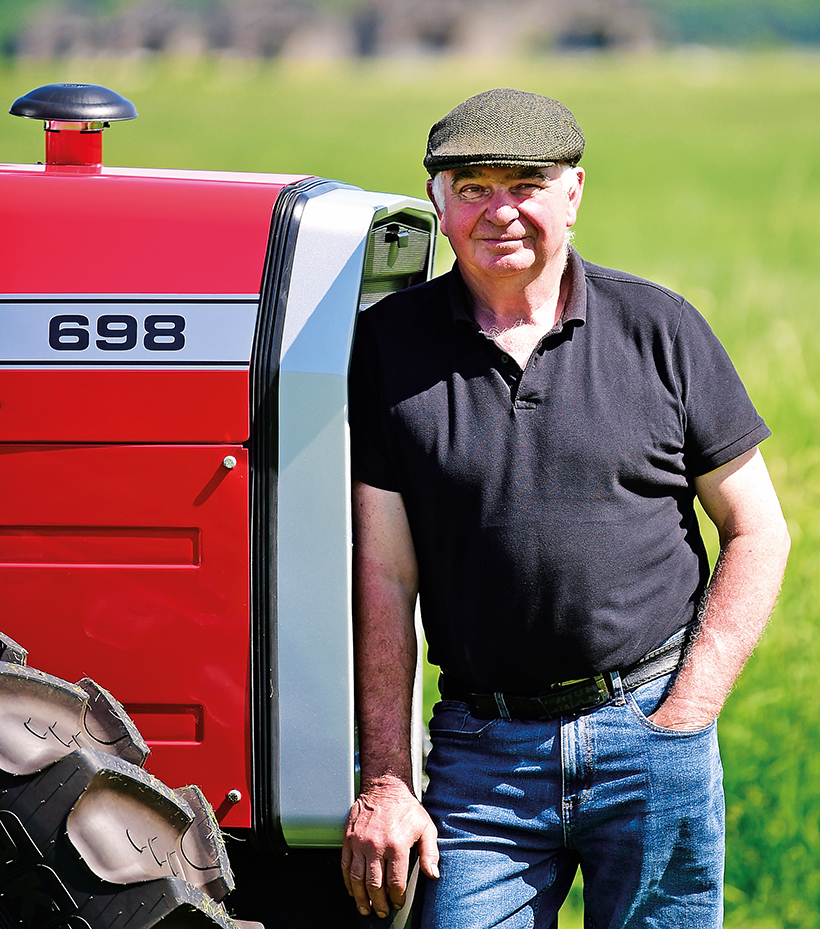
Duncan McColl has created himself a ‘time machine’. His newly-restored MF 698 transports him back to his 20s every time he drives it.
As Duncan thought he was nearing the end of the project, his attention turned to the bits and bobs that remained unticked on his ‘to do’ list. Among these was the electrical system which, while essentially OK, had been chopped about a bit as previous users had added additional lights. New wiring had been spliced-in here and there, but this was sorted out without the need to resort to a new wiring loom.
An amazing find
“I’d also discovered that the heater matrix and the system’s control valve – both tucked away in the cab’s roof – were missing. Unfortunately, these components are no longer available from Massey Ferguson but, thanks to a friend’s amazing research skills, we discovered that the exact same components are also used on the 1980s Mini 1000, and are still available for that application. So that neatly solved that.”
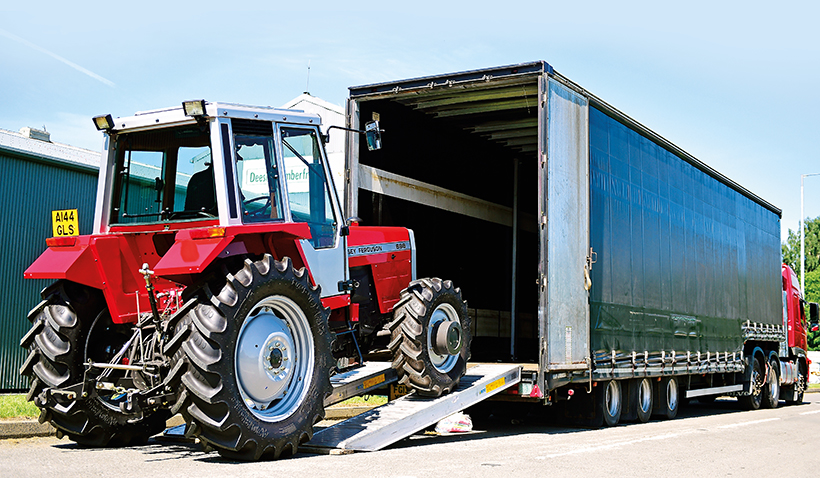
The one snag with tractors of this size – the MF 698 4WD weighs just over four tonnes – is that transportation to shows requires some serious pulling power. Fortunately, being an HGV driver, Duncan has a dedicated curtain-sider trailer that can carry up to three tractors, and offers the added advantage of keeping them spotless while travelling to and from events.
With the tractor’s tinwork beautifully finished in sparking red two-pack paint, it was time to think about the Massey Ferguson decals needed to finish the bonnet sides. “I contacted a sign-writing and decal specialist in Northern Ireland called Lotus Designs and, thankfully, the experts there were able to help. Mine one of the very early, long wheelbase 698s that were only made for about a year, so the bonnet stripes are 4in longer than usual. Fortunately, Lotus Designs had done a set for a model like mine once before, and still had the templates on file.
“However, one detail that I’m still struggling with is the speed chart sticker. Apparently, the fact that this should be black lettering printed on a transparent plastic background makes it difficult to produce, so I’m still waiting for the final word from Lotus Designs on that one.”
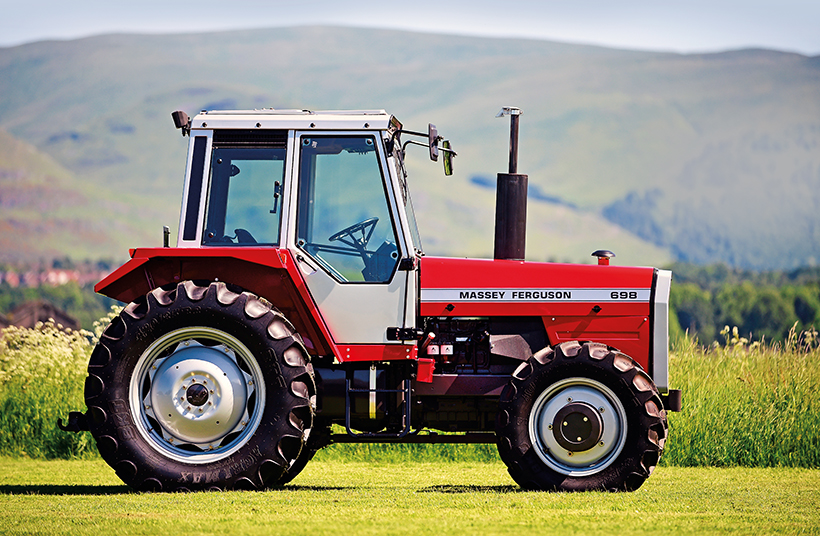
The wheels are original although all four had to be shot-blasted and painted. Duncan had to opt for BKT tyres on the rears instead of Traction Sure Grips, which weren’t available in the correct size.
This superb restoration took Duncan just over six years, which was certainly longer than he was expecting. “It was a lot more work than I was anticipating, although I’m certainly glad that I stuck to it. The one problem now is that, in some respects, the final finish is actually too good. Originally I had intended to produce a smart looking tractor that I’d be able to enjoy with a plough or on regular road runs,” Duncan explained.
“But then I was persuaded by a friend to bring the machine up to show standard, which entailed a lot of detailed refinishing. I had to strip the paint off a number of components that had been sprayed, so they could be zinc-plated, as per the original specification. Also the top coat on all the main panels had to be re-finished to enhance the gloss. That added a few months to the process and, when the work was finally finished in 2022, I was left with a machine that, in reality, is just too good to work. Luckily, the solution to that unforeseen problem was a simple one; I bought myself a very original and usable MF 390!”

Duncan McColl’s 1983 MF 698 is a tractor he worked with while in his 20s. Now, more than 40 years on, he’s taken the opportunity to restore it superbly.
There’s no question that Duncan’s achievement with this tractor is impressive. Granted, it’s not as usable as he’d initially wished for but, on the plus side, he’s created a machine that’ll hold its own with anything else out there on the show circuit. While it’s not a tractor that’ll be seen working in the fields, perhaps this MF 698 deserves every minute of its pampered retirement. Just about the most telling vindication of all his efforts – and those of Allan Bain who helped so much – is the fact that Duncan says the tractor now drives just like he remembers it doing back in 1983, when it was brand new. “Every time I drive it I’m taken straight back 40 years; it’s like a time machine that transports me back to my youth, and that’s an amazing thing to have in your shed!
This feature comes from the latest issue of Tractor & Machinery, and you can get a money-saving subscription to this magazine simply by clicking HERE
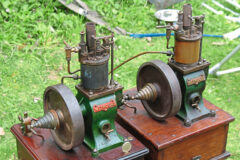
Previous Post
Fine engineering details on stationary engines
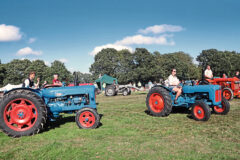
Next Post
Biddenden Tractorfest to celebrate FFA’s 20th anniversary



